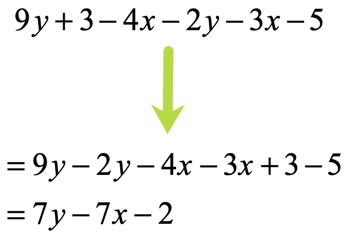Mastering Math: Demystifying Order of Operations with Calculator Soup – Mathematics often appears daunting, especially when confronted with complex equations and expressions. Yet, at the core of every mathematical problem lies a set of rules that dictate how to solve it. One such fundamental rule is the Order of Operations. Understanding and applying these rules correctly can transform seemingly insurmountable math problems into manageable tasks. In this article, we will delve into the intricacies of the Order of Operations and explore how Calculator Soup can serve as a powerful tool in mastering this essential aspect of mathematics.
Understanding Order of Operations:
At its essence, the Order of Operations provides a systematic way to determine which mathematical operations to perform first in an expression. The acronym PEMDAS serves as a helpful mnemonic to remember the order: Parentheses, Exponents, Multiplication and Division (from left to right), Addition and Subtraction (from left to right). Adhering to this sequence ensures that calculations are performed accurately and consistently.
- Parentheses: Operations enclosed within parentheses are prioritized first. This allows for the grouping of operations and ensures that calculations within parentheses are resolved before proceeding to the outer expressions.
- Exponents: Next, any exponentiation operations are performed. This involves raising a base number to a certain power, such as squaring or cubing.
- Multiplication and Division: Moving from left to right, multiplication and division operations are executed. These operations have equal precedence and are performed as they appear in the expression.
- Addition and Subtraction: Finally, addition and subtraction operations are carried out from left to right. Similar to multiplication and division, these operations have equal precedence and are executed in the order they appear.
Illustrative Examples:
Let’s consider a few examples to illustrate the application of the Order of Operations:
- 6+3×26+3×2According to PEMDAS, multiplication takes precedence over addition. Thus, we first perform 3×2=63×2=6, and then add 6+66+6 to obtain the result 1212.
- (4+2)×32(4+2)×32Here, we start by resolving the operations within the parentheses: 4+2=64+2=6. Then, we calculate the exponentiation: 32=932=9. Finally, we multiply 6×96×9 to yield 5454.
- 18÷(3+1)−2218÷(3+1)−22Following the Order of Operations, we first evaluate the expression within the parentheses: 3+1=43+1=4. Then, we perform the division: 18÷4=4.518÷4=4.5. Lastly, we compute the exponentiation: 22=422=4. Subtracting 44 from 4.54.5 gives us the final result of 0.50.5.
Utilizing Calculator Soup:
While mastering the Order of Operations is crucial, it can be challenging to apply consistently, especially in more complex expressions. This is where Calculator Soup proves invaluable. Calculator Soup is an online tool that allows users to input mathematical expressions and receive accurate calculations based on the Order of Operations.
- User-Friendly Interface: Calculator Soup features a simple and intuitive interface, making it accessible to users of all levels of mathematical proficiency.
- Instant Results: Upon entering an expression, Calculator Soup quickly computes the result following the correct order of operations. This instantaneous feedback enables users to verify their calculations and identify any errors promptly.
- Step-by-Step Solutions: For those seeking a deeper understanding of the process, Calculator Soup offers step-by-step solutions for each calculation. This feature provides insights into how the Order of Operations is applied at each stage of the computation.
- Versatile Functionality: Calculator Soup supports a wide range of mathematical functions and operations, including parentheses, exponents, logarithms, trigonometric functions, and more. This versatility makes it a comprehensive tool for tackling diverse mathematical challenges.
Conclusion:
In the realm of mathematics, mastering the Order of Operations is akin to unlocking a fundamental puzzle that underpins countless calculations. By adhering to the sequence prescribed by PEMDAS and leveraging tools like Calculator Soup, individuals can approach mathematical problems with confidence and precision. Whether you’re a student grappling with algebraic equations or a professional navigating complex numerical analyses, understanding and applying the Order of Operations is essential for mathematical success. So, embrace the power of PEMDAS and Calculator Soup, and embark on your journey to mastering math with clarity and proficiency.

